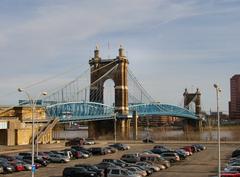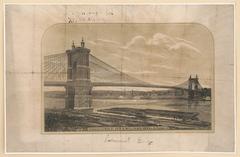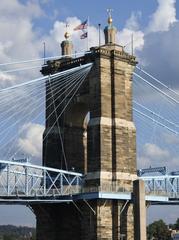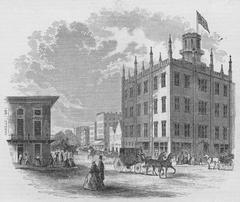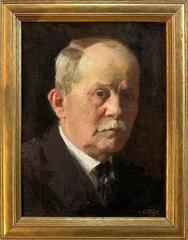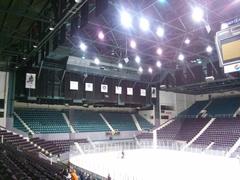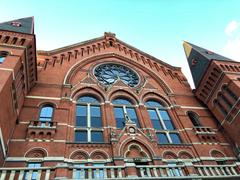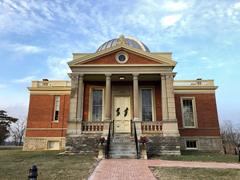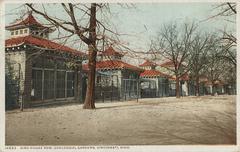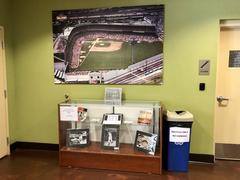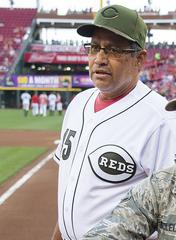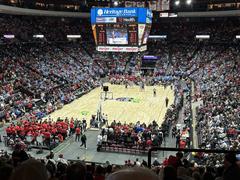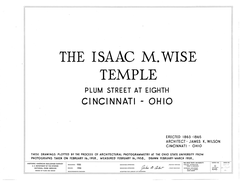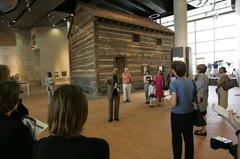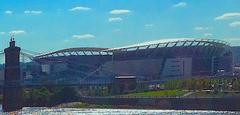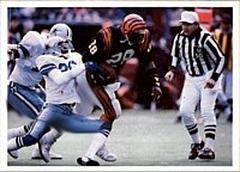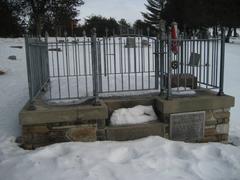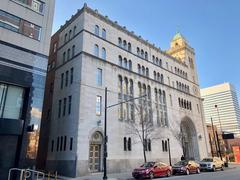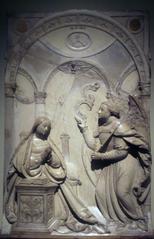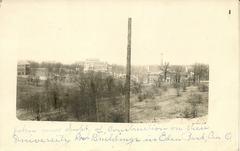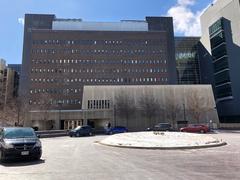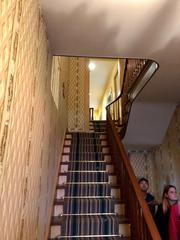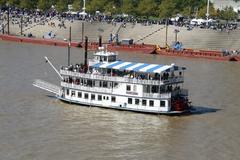
John A. Roebling Suspension Bridge: Visiting Hours, Tickets, and Cincinnati Historical Sites Guide
Date: 15/06/2025
Introduction
Spanning the Ohio River between Cincinnati, Ohio, and Covington, Kentucky, the John A. Roebling Suspension Bridge stands as an enduring landmark of American engineering and regional cultural pride. Since its completion in 1866, the bridge has served as a vital transportation link and an architectural icon, attracting visitors from around the world. Designed by the visionary engineer John Augustus Roebling, its innovative construction set new standards for suspension bridges and directly influenced later masterpieces, such as the Brooklyn Bridge.
Today, the bridge is celebrated not only for its historical significance but also for its accessibility, breathtaking views, and proximity to vibrant riverfront neighborhoods. This comprehensive guide provides everything you need to know about visiting hours, tickets (none required), accessibility, travel tips, nearby attractions, and answers to common questions—ensuring you make the most of your visit to this Cincinnati historical treasure. (Cincinnati Magazine; SAH Archipedia; RoeblingBridge.org)
Table of Contents
- Introduction
- Historical Background
- Visitor Information
- Visuals and Media
- Frequently Asked Questions (FAQ)
- Related Articles
- Plan Your Visit
- References
Historical Background
Early Vision and Planning
The necessity for a reliable crossing between Cincinnati and Covington became clear in the mid-19th century as commerce and population boomed. The Covington and Cincinnati Bridge Company was formed in 1846 to address this need, initially considering various prominent engineers before selecting John A. Roebling, whose previous success with the Niagara Railroad Suspension Bridge had established his reputation. Roebling’s plan called for a 1,200-foot span to allow unimpeded steamboat navigation, but political and logistical challenges delayed the project until 1854, when he was finally contracted to lead the endeavor. (Cincinnati Magazine; SAH Archipedia)
Construction Challenges and Innovations
Groundbreaking began in 1856, but construction soon faced setbacks, including the Civil War, economic downturns, and technical difficulties due to the challenging riverbed conditions. Roebling’s ingenuity shone through: he developed custom displacement pumps to keep the worksite dry and designed robust foundations using layered oak timbers and sandstone blocks. The Romanesque Revival stone towers and innovative cable system—each cable containing over 5,000 individual wires—were feats of both function and form. (SAH Archipedia)
Architectural Significance
When it opened to pedestrians in December 1866 (and to vehicles in 1867), the bridge’s 1,057-foot main span made it the longest suspension bridge worldwide. Roebling’s design juxtaposed the strength of the stone towers with the elegance of slender suspension cables, creating a visually striking structure that doubled as a work of public art. The bridge’s towers, with heavy buttresses and rounded arches, exemplify Roebling’s belief that infrastructure should also inspire civic pride. (Cincinnati Magazine)
Role in Local and National History
The bridge’s completion transformed the Cincinnati metropolitan area by facilitating commerce, travel, and cultural exchange between Ohio and Kentucky. It quickly became a symbol of civic achievement and economic progress. Nationally, the bridge served as a testing ground for techniques that Roebling would use in the Brooklyn Bridge, influencing suspension bridge design for generations. (SAH Archipedia)
Preservation and Recognition
Originally operated by the Covington and Cincinnati Bridge Company, the bridge was acquired by the Commonwealth of Kentucky in 1953. It was designated a National Historic Civil Engineering Landmark in 1983 and remains an active thoroughfare for vehicles and pedestrians. Recent restorations have strengthened its structure and preserved its historic features, reinforcing its status as an architectural and cultural icon. (RoeblingBridge.org)
Enduring Legacy
More than 150 years since its completion, the John A. Roebling Suspension Bridge endures as a beloved Cincinnati landmark, celebrated for its blend of engineering innovation and aesthetic grandeur. As historian Don Heinrich Tolzmann observed, “Structurally and architecturally, it is a masterpiece and reflects the engineering genius of its creator.” (Cincinnati Magazine)
Visitor Information
Visiting Hours
- Open 24/7: The bridge is accessible to pedestrians, cyclists, and vehicles around the clock. No specific hours or seasonal restrictions apply.
- Safety Note: Daytime visits are recommended for optimal safety and the best sightseeing and photography conditions.
Tickets and Admission
- Free Entry: There are no admission fees or tickets required for crossing the bridge, walking its pedestrian paths, or enjoying its views.
Accessibility
- Pedestrian Walkways: Both sides of the bridge feature wide, flat walkways suitable for wheelchairs, strollers, and bikes.
- Approach Inclines: The approaches on either side involve gentle slopes; benches are available for rest.
- Vehicular Access: Open to vehicles with weight limits enforced; check for periodic closures due to maintenance.
Travel Tips
- Parking: Ample parking is available in nearby lots and garages on both sides of the river, particularly around Smale Riverfront Park (Cincinnati) and Roebling Point (Covington).
- Transit: Public buses serve both approaches; TANK buses connect Covington to Cincinnati across the bridge.
- Best Times: Early morning and late afternoon offer beautiful lighting and fewer crowds.
- Weather: The bridge is exposed to the elements—dress accordingly and use caution in icy conditions.
Nearby Attractions
- Smale Riverfront Park: Features gardens, interactive fountains, playgrounds, and picnic areas. (EkoMovers)
- The Banks Entertainment District: Dine and shop near Great American Ball Park and the National Underground Railroad Freedom Center.
- Roebling Point/ MainStrasse Village (Covington): Enjoy local eateries, coffee shops, and historic German-American architecture.
- Fountain Square: A social hub in downtown Cincinnati, just a short walk from the bridge.
Special Events and Tours
- Community Events: The bridge hosts community festivals, art walks, marathons, and the celebrated flag replacement ceremonies.
- Guided Tours: While no dedicated tours operate solely on the bridge, many local walking tours and history excursions include it as a highlight. Self-guided tour resources and virtual experiences are available online. (RoeblingBridge.org)
Visuals and Media
For a richer experience, explore photo galleries, virtual tours, and live webcams showcasing the bridge’s architecture and stunning river views. Many local tourism websites and the Roebling Bridge Official Site offer interactive maps and historical images.
Frequently Asked Questions (FAQ)
Q: Is there a ticket or fee required to visit the John A. Roebling Suspension Bridge?
A: No, access is free for both pedestrians and vehicles.
Q: What are the bridge’s visiting hours?
A: The bridge is open 24 hours a day, every day of the year.
Q: Is the bridge accessible for wheelchairs and strollers?
A: Yes, the pedestrian walkways are accessible, though there are some inclines on the approaches.
Q: Are guided tours available?
A: Local organizations sometimes offer walking tours that include the bridge. Self-guided online tours are also available.
Q: Where can I park?
A: Parking is available in nearby garages and lots on both the Cincinnati and Covington sides.
Q: Are there special events on the bridge?
A: Yes, the bridge hosts events such as marathons, festivals, and the semi-annual flag replacement ceremony.
Related Articles
Plan Your Visit
Experience the legacy of the John A. Roebling Suspension Bridge for yourself. Whether you’re seeking a scenic walk, memorable photographs, or a deeper appreciation for Cincinnati’s history, the bridge offers a welcoming and inspiring destination. For up-to-date information on events, maintenance, and virtual resources, consult the official Roebling Bridge website.
Download the Audiala app for curated travel guides, offline maps, and guided tours of Cincinnati’s top historical sites. Stay connected by following local tourism organizations on social media for the latest updates.
References
- View from the Bridge, Cincinnati Magazine
- John A. Roebling Suspension Bridge, SAH Archipedia
- The John A. Roebling Suspension Bridge Set to Reopen This Week, CityBeat
- Roebling Bridge Official Website
- 12 Best Places to Visit in Cincinnati This Summer 2025, EkoMovers
- John A. Roebling Suspension Bridge Stroll Across History, Visit Cincy

